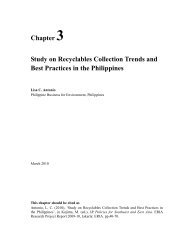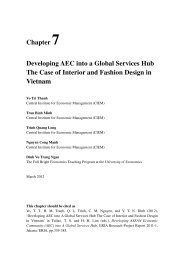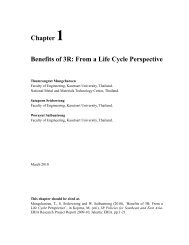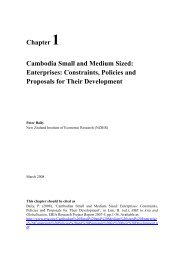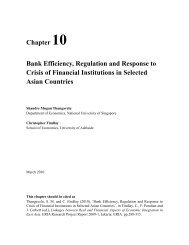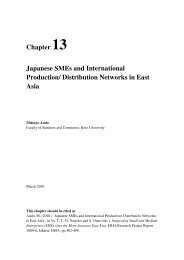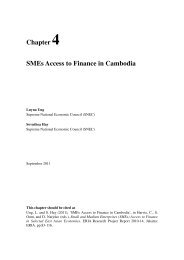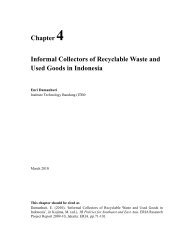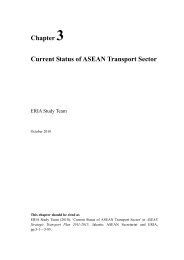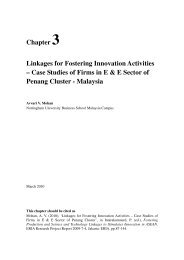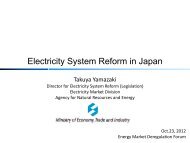Chapter 2 Cambodia - ERIA
Chapter 2 Cambodia - ERIA
Chapter 2 Cambodia - ERIA
Create successful ePaper yourself
Turn your PDF publications into a flip-book with our unique Google optimized e-Paper software.
For nearly fifty years, farm goods were excluded from the normal disciplines of world trade. TheGeneral Agreement on Tariffs and Trade (GATT) maintained a series of special conditions thatpermitted the growth of subsidies as well as high and unpredictable market protection. The worldmarkets for many important agricultural products are completely artificial. Special rules allowedthe European Community (EC) to develop its complex systems of market protection, domesticsubsidization of farmers, and export subsidies called the ”Common Agricultural Policy” (CAP).The United States sheltered long-standing farm subsidy programs. Japan, Switzerland,Scandinavian countries, and most other developed countries were able to maintain highlyprotected agricultural sectors.Tariff QuotasThe WTO outlaws the use of quotas on imports and exports. Customs duties are the main legalform of protection, but there are two important exceptions: the garments and agricultural sectors.The permitted use of quotas in the agricultural sector is termed “tariff quotas” because they allowa certain volume of access to the market at low or zero customs duty. All imports outside thetariff quota are subjected to a much higher tariff, usually so high that imports cannot compete.The system of tariff quotas in the WTO is in place largely to ensure that very high tariffs cannotcompletely eliminate imports. Around 1,400 tariff quotas are currently in place, affecting accessin about forty-three WTO member countries. <strong>Cambodia</strong> itself does not use tariff quotas under theWTO, but agribusiness exporters in <strong>Cambodia</strong> will often encounter them directly or indirectly.<strong>Cambodia</strong> already benefits from many favorable trade relationships. The influence of WTOaccession on the further opening of the <strong>Cambodia</strong>n market is limited. Where they do not enjoypreferential access terms, <strong>Cambodia</strong>n exporters seldom have to pay duties above the local “mostfavored nation” (MFN) applied rates. The principal market-access advantage for <strong>Cambodia</strong>nproducers in export markets will be the security of the bound tariffs committed by all other WTOmembers. In almost 150 countries, <strong>Cambodia</strong>n exporters will have a guaranteed ceiling to theduties they can be charged by customs authorities.The availability of tariff advantages under the Generalized System of Preferences (GSP) willcontinue to be important for <strong>Cambodia</strong>n exporters, especially for some major industrial country109



